There is a reason why many wellness practitioners ask you to open your mouth and say, “ahh.” With a closer look at your tongue and other parts of the mouth, a lot can be revealed about your health. Whether you see red bumps, white spots, or other strange things in the mirror when you look at your tongue, it could be a sign of an underlying condition. Undoubtedly, this article is meant to be taken as a guide and if you suspect anything remotely suspicious, do not try to google for more symptoms for your tongue, instead, just go to a doctor for medical advice.
Strawberry Red Tongue
 You might want to take a look at your current diet. A red tongue means your body is suffering from vitamin deficiency and you might want to ensure that you are getting the necessary minerals, supplements and nutrients your body needs. Try a vitamin supplement, particularly iron or B12 and if it doesn’t work, consult a doctor.
You might want to take a look at your current diet. A red tongue means your body is suffering from vitamin deficiency and you might want to ensure that you are getting the necessary minerals, supplements and nutrients your body needs. Try a vitamin supplement, particularly iron or B12 and if it doesn’t work, consult a doctor.
Cracked/Wrinkled Tongue
 If your tongue has plenty of cracks on it, it just means you’re ageing, or growing up. But remember to clean your mouth thoroughly to ensure that none of the cracks get infected.
If your tongue has plenty of cracks on it, it just means you’re ageing, or growing up. But remember to clean your mouth thoroughly to ensure that none of the cracks get infected.
Brown, dirty looking tongue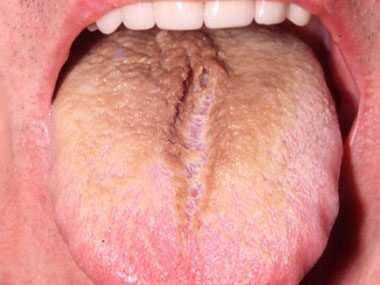 Your tongue has brown or black fuzz. It’s not a health concern, but this means you have to revisit mouth hygiene as soon as possible. Make sure you brush, floss and use mouthwash every time you clean your mouth and your tongue will get back to it’s healthy looking state. It can also be caused by drinking caffeinated drinks and smoking.
Your tongue has brown or black fuzz. It’s not a health concern, but this means you have to revisit mouth hygiene as soon as possible. Make sure you brush, floss and use mouthwash every time you clean your mouth and your tongue will get back to it’s healthy looking state. It can also be caused by drinking caffeinated drinks and smoking.
Small White Patches or Leukoplakia There’s something that irritates your mouth and this condition is usually seen in smokers. Smokers usually gets them on the underside of their tongues. Although painless at first, this has at least 5% chance of developing into cancer. If you don’t smoke, there could be something harsh that rubs against your tongue and this will usually go away in two weeks at most. If not, visit a dentist ASAP.
There’s something that irritates your mouth and this condition is usually seen in smokers. Smokers usually gets them on the underside of their tongues. Although painless at first, this has at least 5% chance of developing into cancer. If you don’t smoke, there could be something harsh that rubs against your tongue and this will usually go away in two weeks at most. If not, visit a dentist ASAP.
Cottage Cheese White 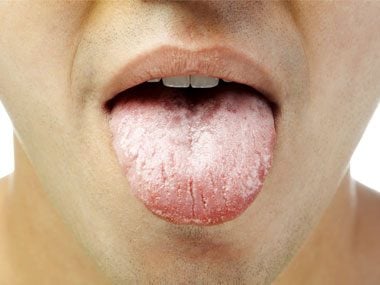 This is worse than the small white patches displayed by lumps of white all over your tongue. This could signal a thrush, which is a yeast infection in the mouth due to candida. This condition is often associated with antibiotics or it could mean you have very weak immune system. This is why a thrush is common in children and people with diabetes and autoimmune diseases.
This is worse than the small white patches displayed by lumps of white all over your tongue. This could signal a thrush, which is a yeast infection in the mouth due to candida. This condition is often associated with antibiotics or it could mean you have very weak immune system. This is why a thrush is common in children and people with diabetes and autoimmune diseases.
Small, painful sores on the tongue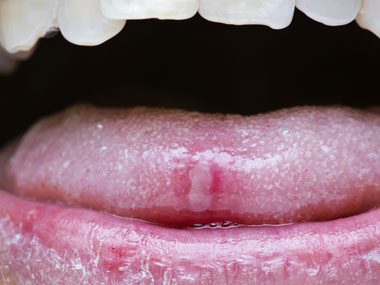 Don’t be alarmed if these painful sores appear suddenly, it could be the fact that you’re under great stress. These sores appear on the cheeks and mouth and they are very uncomfortable, especially during the first four days. Learn to relax a bit and you’d find them disappearing soon enough. If problem persists, please consult your doctor immediately.
Don’t be alarmed if these painful sores appear suddenly, it could be the fact that you’re under great stress. These sores appear on the cheeks and mouth and they are very uncomfortable, especially during the first four days. Learn to relax a bit and you’d find them disappearing soon enough. If problem persists, please consult your doctor immediately.
Red Lesions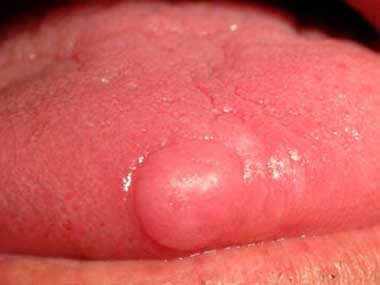 These appear from time to time, particularly with canker sores. But if you have them regularly, it is a sign that you have tongue cancer. Make sure you check with your doctor immediately.
These appear from time to time, particularly with canker sores. But if you have them regularly, it is a sign that you have tongue cancer. Make sure you check with your doctor immediately.
Tongue with hills and valleys (Bumpy tongue)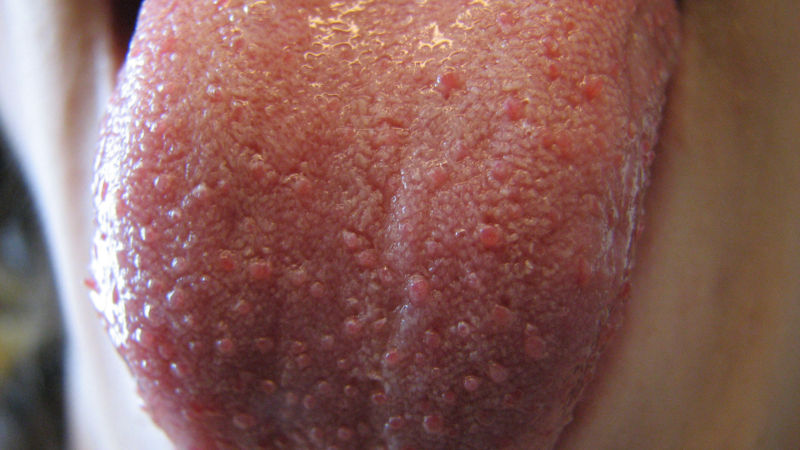 If you see your tongue looks like there are a lot of bumps, this is something you shouldn’t be worried about. It’s normal to have a bumpy tongue.
If you see your tongue looks like there are a lot of bumps, this is something you shouldn’t be worried about. It’s normal to have a bumpy tongue.







